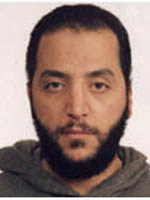
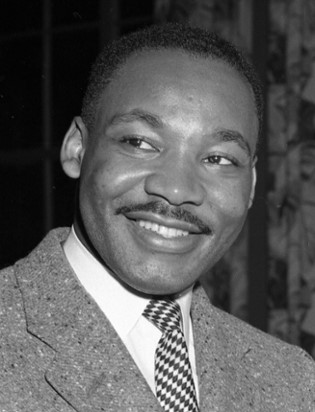
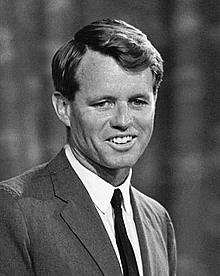 There are good reasons to think that the KGB arranged the murders of John F. Kennedy, Martin Luther King, and Robert F. Kennedy, as well as of other Americans. Note: “good reasons”, not definitive proof. In each case, I will argue that We must consider the KGB the leading suspect (in the JFK assassination, a KGB rogue and the Mafia collaborated while the KGB acted as a ghost partner). This perception can guide further investigation that can result in the more definitive finding that the KGB arranged these and related murders.
There are good reasons to think that the KGB arranged the murders of John F. Kennedy, Martin Luther King, and Robert F. Kennedy, as well as of other Americans. Note: “good reasons”, not definitive proof. In each case, I will argue that We must consider the KGB the leading suspect (in the JFK assassination, a KGB rogue and the Mafia collaborated while the KGB acted as a ghost partner). This perception can guide further investigation that can result in the more definitive finding that the KGB arranged these and related murders.
First, I will explain how the KGB and Mafia have emerged as the prime suspects in the JFK assassination. Not only was this the most important and best-known case. New evidence and interpretation point to the KGB’s role in particular and have implications for the other murders. Second, I will treat each of ten likely KGB murders in summary fashion. Third, I will touch on factors that have hampered resolution of these cases for many decades. Fourth, comparing the cases, I will identify characteristics of the KGB’s art of deniable murder. Fifth, I will draw some conclusions.
*****
1. The KGB and JFK
Tags: Arthur Paisley, assassinations, CIA, conspiracy theories, Cord Meyer, Dorothy Kilgallen, FBI, Florence Pritchett Smith, George de Mohrenschildt, Ion Mihai Pacepa, Jack Ruby, John F. Kennedy, Kennedy assassination, KGB, Lee Harvey Oswald, Marilyn Monroe, Martin Luther King, Mary Meyer, MKULTRA, Nikita Khrushchev, Robert F. Kennedy, Sirhan Sirhan, William Colby, William J. Bryan MD
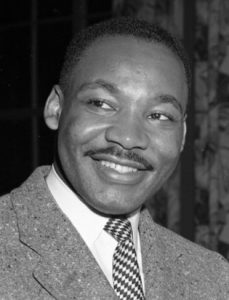
On April 4, 1968, a single bullet from an assassin’s rifle killed renowned civil rights leader Martin Luther King. Many investigators have argued that James Earl Ray, the alleged gunman, was part of a conspiracy, and some have pointed to FBI or CIA. But he pleaded guilty and was treated as a lone gunman. A very few observers have suggested that the KGB perpetrated King’s murder. Now Kenneth J. Dillon of Scientia Press has devised a theory that shows why we should consider the KGB the leading suspect. See https://www.scientiapress.com/kgb-theory. Here Dillon is interviewed by Stephen J. Dillon.
Did the KGB Assassinate Martin Luther King?.mp4
Tags: assassination of MLK, CIA, FBI, James Earl Ray, KGB, Martin Luther King, MLK, Philip Melanson

There are two sides to every story. Judges rightly admonish juries to check out both sides before coming to a conclusion. Our entire system of adversarial justice is built on this principle. But under surveillance by FBI in the 2001 anthrax mailings case, U.S. Army scientist Bruce Ivins committed suicide. So only one side got to tell its version of the story.
Upon closing the case on February 19, 2010, FBI issued an Amerithrax Investigative Summary that concludes that Ivins was the anthrax mailer. The Summary contains serious errors as well as minor ones. It also omits crucial information. So, to ensure a fair outcome, we need to look at it through the eyes of a defense attorney, to make sure that the American people can check out both sides of the story before coming to a conclusion.
Tags: al Qaeda, anthrax mailings, biodefense, Bruce Ivins, FBI, Jdey, terrorism
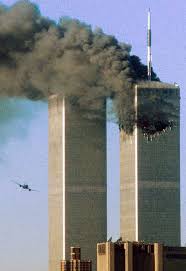 The apparent misdeeds and cover-ups of the administration of George W. Bush related to the terrorist attacks of 2001 remain in historical limbo. Neither presidents, nor the Congress, nor the media have gotten to the bottom of these tragic events. The 9/11 Commission Report, while providing hundreds of useful details, egregiously and unpardonably failed to examine the doings of senior government officials in the run-up to 9/11 and so must be considered a cover-up. As a result, the American public has not come to closure on the 9/11 attacks or on the anthrax mailings of 2001, nor is there a shared understanding of such a critical issue as the real reasons that the US attacked Iraq in 2003.
The apparent misdeeds and cover-ups of the administration of George W. Bush related to the terrorist attacks of 2001 remain in historical limbo. Neither presidents, nor the Congress, nor the media have gotten to the bottom of these tragic events. The 9/11 Commission Report, while providing hundreds of useful details, egregiously and unpardonably failed to examine the doings of senior government officials in the run-up to 9/11 and so must be considered a cover-up. As a result, the American public has not come to closure on the 9/11 attacks or on the anthrax mailings of 2001, nor is there a shared understanding of such a critical issue as the real reasons that the US attacked Iraq in 2003.
These failures have left the field open to wild speculations regarding these events, generally termed “conspiracy theories”, though this term obscures the crucial distinction between elaborate prospective plots involving many actors (silly in the context of an open society) and retrospective cover-ups that government officials who have made embarrassing mistakes are all too prone to engage in (very realistic and plausible). However, it is also true that simple prospective plots involving two or three individuals can occur.
Failure to reach a full, shared understanding of major events that led to interminable wars and occupations in the Middle East and Southwest Asia as well as to the undermining of civil liberties has helped to alienate Americans from their government and media, a triumph for America’s enemies. So we must make every effort to establish a clear common interpretation of what actually happened.
Tags: 9/11 attacks, Able Danger, al Qaeda, anthrax mailings, biodefense, Bush Administration, conspiracy theories, Dick Cheney, FBI, Flight #587, George W. Bush, I. Lewis Libby, Ivins, Jdey, Paul Wolfowitz, shoebombing, terrorism
 April 4, 1968. Civil rights leader Martin Luther King was killed by a single bullet as he stood on the second floor balcony outside his hotel room in Memphis. The shot came from high on his right, not on a horizontal trajectory from the rooming house behind the hotel of the alleged assassin, James Earl Ray. Ray, a mediocre shot, would have needed to stand on the edge of the common bathroom tub to see out the window, and a wall (since conveniently removed) would have kept him from aligning the rifle. Ballistics, forensics, and medical evidence all rule him out. The House Select Committee on Assassinations concluded that there had been a conspiracy, with Ray as the patsy.
April 4, 1968. Civil rights leader Martin Luther King was killed by a single bullet as he stood on the second floor balcony outside his hotel room in Memphis. The shot came from high on his right, not on a horizontal trajectory from the rooming house behind the hotel of the alleged assassin, James Earl Ray. Ray, a mediocre shot, would have needed to stand on the edge of the common bathroom tub to see out the window, and a wall (since conveniently removed) would have kept him from aligning the rifle. Ballistics, forensics, and medical evidence all rule him out. The House Select Committee on Assassinations concluded that there had been a conspiracy, with Ray as the patsy.
Critical researchers have argued that the federal government, especially FBI or perhaps CIA, carried out the assassination
Tags: assassination, CIA, Eric S. Galt, FBI, J. Edgar Hoover, James Earl Ray, KGB, Martin Luther King, RCMP
 August 4, 1962. Celebrity actress Marilyn Monroe died in her bedroom in Los Angeles (or in the guest house near her house, from which she was carried back to her bedroom).
August 4, 1962. Celebrity actress Marilyn Monroe died in her bedroom in Los Angeles (or in the guest house near her house, from which she was carried back to her bedroom).
Tags: assassinations, CIA, FBI, JFK, KGB, Marilyn Monroe, MLK, RFK
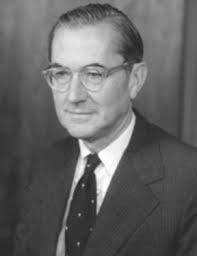 On April 27, 1996, 76-year old William Colby, former director of the CIA, disappeared from his vacation home on the water at Rocky Point, Maryland. Colby had spent the day at a marina fixing his sloop. He returned home after 6 pm, phoned his wife, who was visiting her mother in Texas, and told her he was tired and would eat supper, then go to bed. He watered his trees, met with his gardener and his visiting sister around 7:15 pm (sunset was at 7:57), and fixed himself a meal. The next day there was no sign of him. Eventually, a neighbor phoned the police. They found his supper half-eaten. The computer and radio were on. His canoe was missing.
On April 27, 1996, 76-year old William Colby, former director of the CIA, disappeared from his vacation home on the water at Rocky Point, Maryland. Colby had spent the day at a marina fixing his sloop. He returned home after 6 pm, phoned his wife, who was visiting her mother in Texas, and told her he was tired and would eat supper, then go to bed. He watered his trees, met with his gardener and his visiting sister around 7:15 pm (sunset was at 7:57), and fixed himself a meal. The next day there was no sign of him. Eventually, a neighbor phoned the police. They found his supper half-eaten. The computer and radio were on. His canoe was missing.
By the next day a full-scale search with helicopters and divers was under way.
Tags: assassination, CIA, FBI, forensics, JFK, KGB, Mary Meyer, MLK, RFK, William Colby
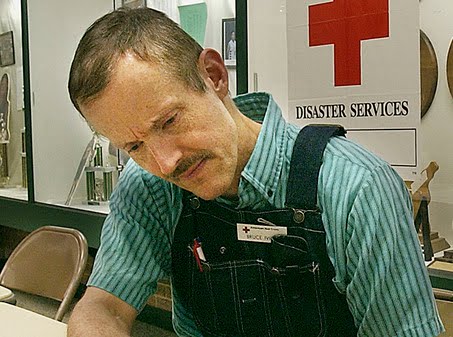 Here are the judge’s March 16, 2020 Order and Memorandum opinion giving his final ruling. For a general explanation of the anthrax mailings case, see Was Abderraouf Jdey the Anthrax Mailer? The judge does not appear to have read it.
Here are the judge’s March 16, 2020 Order and Memorandum opinion giving his final ruling. For a general explanation of the anthrax mailings case, see Was Abderraouf Jdey the Anthrax Mailer? The judge does not appear to have read it.
Of the documents, the first set was released by FBI in the course of the litigation. The second set includes selected lawsuit documents from Dillon v. U.S. Department of Justice. Following this is a discussion of possible destruction of evidence.
The first set includes 102 pages of emails to and from accused Mailer Bruce Ivins, released by FBI on court order on March 20, 2019, plus Laboratory Notebook 4282. FOIA request #1327397 sought Ivins’s emails and other documents for September and October, 2001. FOIA request #1329530 sought the Table of Contents and the 16 pages on Ivins from the 2000-page Interim Major Case Summary of 2006. After repeated failures to find emails, FBI experts located them as 1A attachments in the Amerithrax file.
Tags: Abderraouf Jdey, anthrax, anthrax mailings, Bruce Ivins, FBI, FOIA, Robert Mueller


 There are good reasons to think that the KGB arranged the murders of John F. Kennedy, Martin Luther King, and Robert F. Kennedy, as well as of other Americans. Note: “good reasons”, not definitive proof. In each case, I will argue that We must consider the KGB the leading suspect (in the JFK assassination, a KGB rogue and the Mafia collaborated while the KGB acted as a ghost partner). This perception can guide further investigation that can result in the more definitive finding that the KGB arranged these and related murders.
There are good reasons to think that the KGB arranged the murders of John F. Kennedy, Martin Luther King, and Robert F. Kennedy, as well as of other Americans. Note: “good reasons”, not definitive proof. In each case, I will argue that We must consider the KGB the leading suspect (in the JFK assassination, a KGB rogue and the Mafia collaborated while the KGB acted as a ghost partner). This perception can guide further investigation that can result in the more definitive finding that the KGB arranged these and related murders.

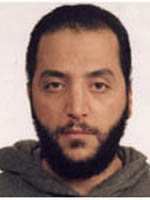


 April 4, 1968. Civil rights leader Martin Luther King was killed by a single bullet as he stood on the second floor balcony outside his hotel room in Memphis.
April 4, 1968. Civil rights leader Martin Luther King was killed by a single bullet as he stood on the second floor balcony outside his hotel room in Memphis. August 4, 1962. Celebrity actress Marilyn Monroe died in her bedroom in Los Angeles (or in the guest house near her house, from which she was carried back to her bedroom).
August 4, 1962. Celebrity actress Marilyn Monroe died in her bedroom in Los Angeles (or in the guest house near her house, from which she was carried back to her bedroom). On April 27, 1996, 76-year old William Colby, former director of the CIA, disappeared from his vacation home on the water at Rocky Point, Maryland. Colby had spent the day at a marina fixing his sloop. He returned home after 6 pm, phoned his wife, who was visiting her mother in Texas, and told her he was tired and would eat supper, then go to bed. He watered his trees, met with his gardener and his visiting sister around 7:15 pm (sunset was at 7:57), and fixed himself a meal. The next day there was no sign of him. Eventually, a neighbor phoned the police. They found his supper half-eaten. The computer and radio were on. His canoe was missing.
On April 27, 1996, 76-year old William Colby, former director of the CIA, disappeared from his vacation home on the water at Rocky Point, Maryland. Colby had spent the day at a marina fixing his sloop. He returned home after 6 pm, phoned his wife, who was visiting her mother in Texas, and told her he was tired and would eat supper, then go to bed. He watered his trees, met with his gardener and his visiting sister around 7:15 pm (sunset was at 7:57), and fixed himself a meal. The next day there was no sign of him. Eventually, a neighbor phoned the police. They found his supper half-eaten. The computer and radio were on. His canoe was missing. Here are the judge’s March 16, 2020
Here are the judge’s March 16, 2020 
